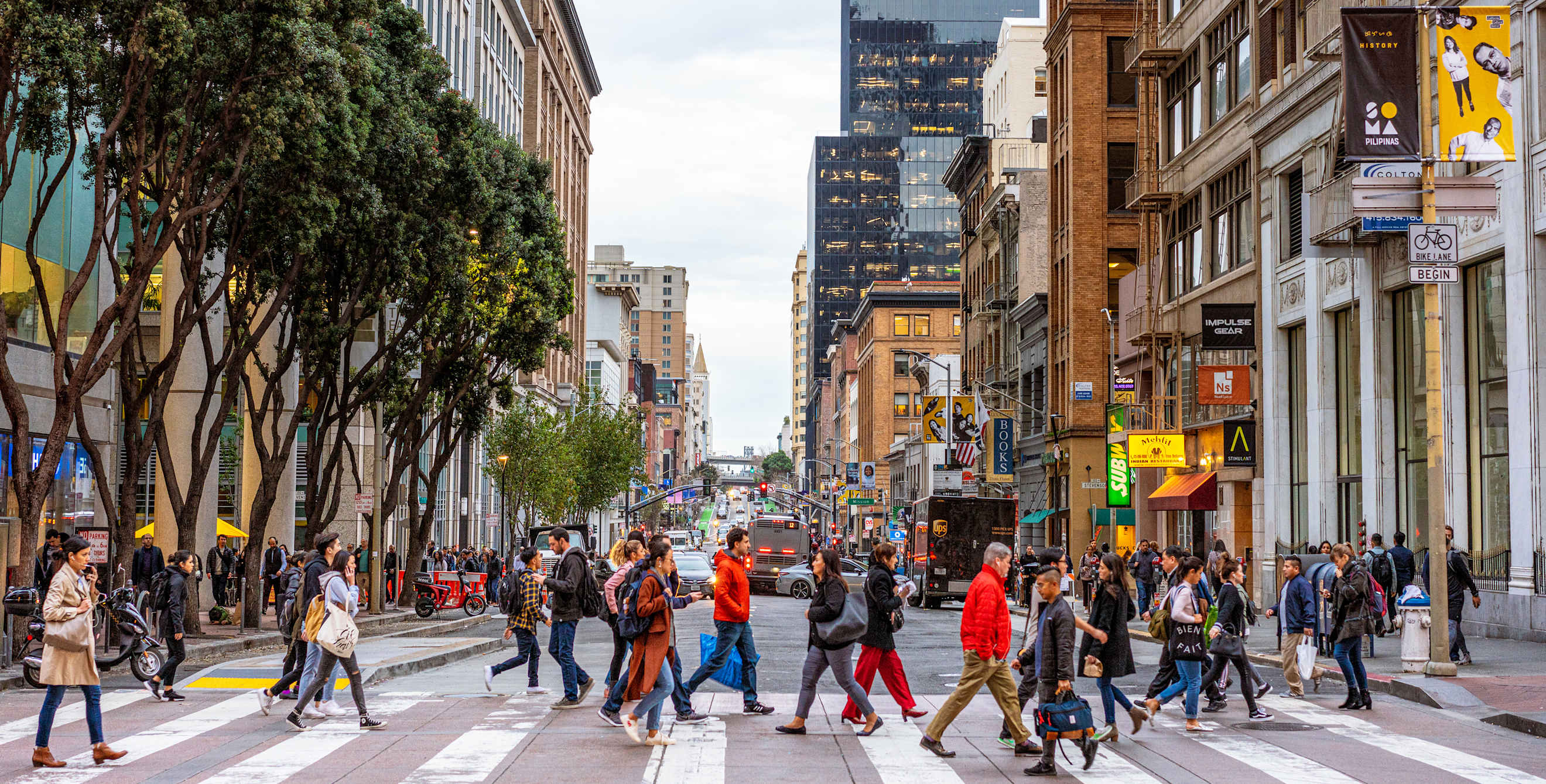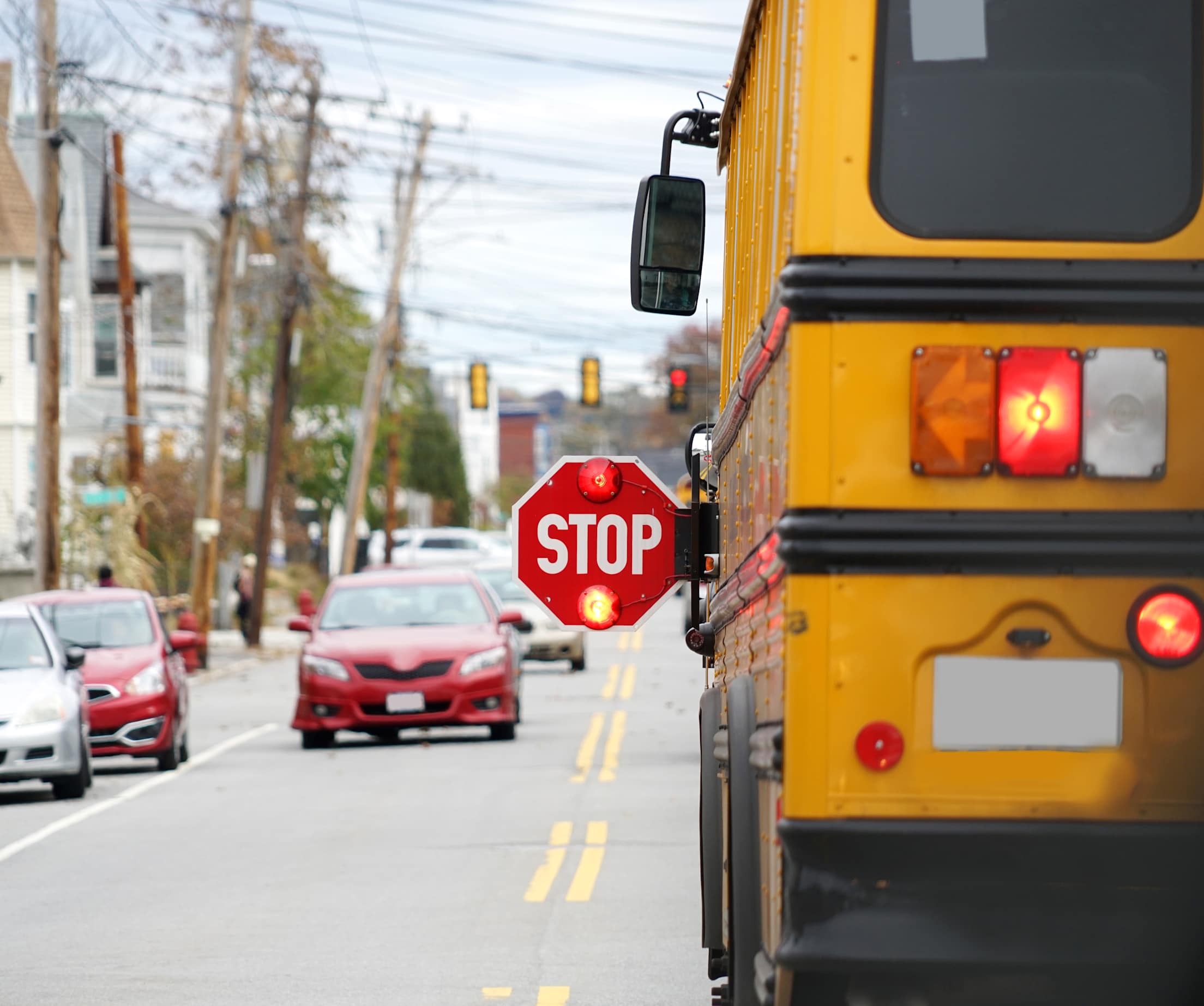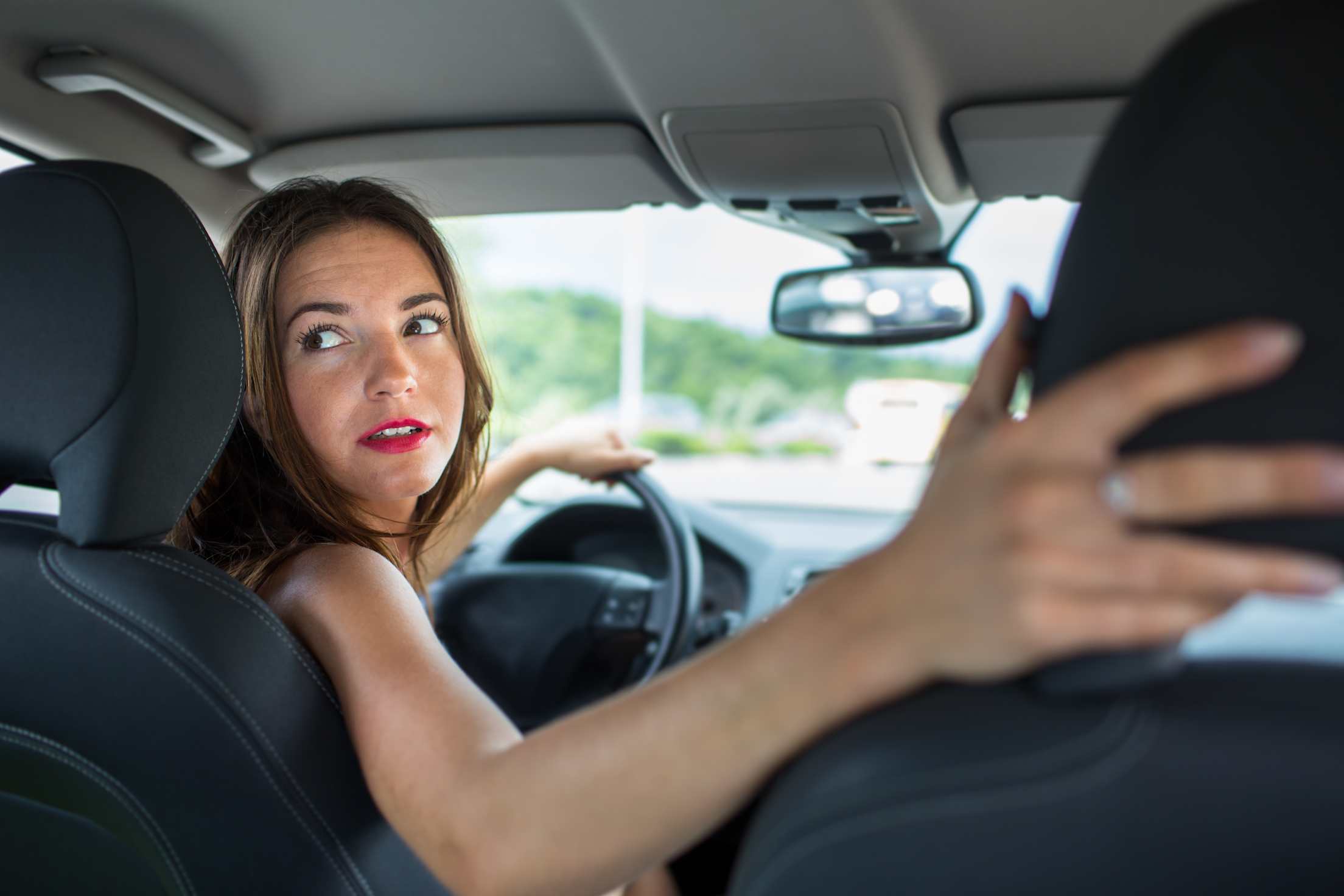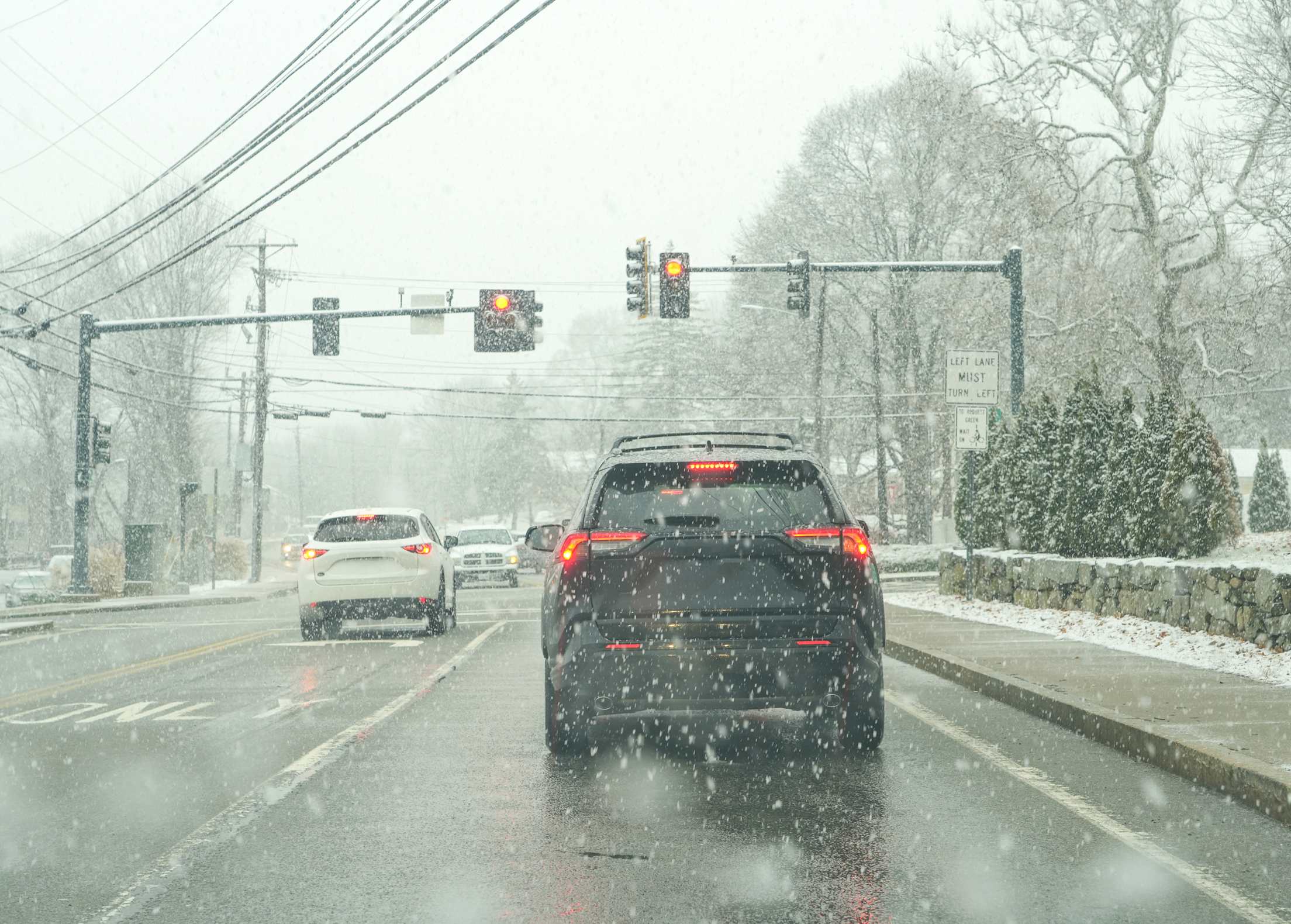
17 Ways to Keep Pedestrians Safe When You Drive
Share the road with those on foot.

Part of being a safe driver is ensuring you share the road. But it’s not just other drivers you have to think about: You need to look out for pedestrians, too. According to the most recently available data from the National Highway Traffic Safety Administration (NHTSA), there were 7,522 pedestrian fatalities and 67,336 pedestrian injuries from traffic crashes in 2022.
In an encouraging sign, pedestrian fatalities were down 3% in the first half of 2024 compared with the year prior, according to data from NHTSA. As a driver, you can do your part to drive those numbers even lower.
1. Always stop for pedestrians.
Keeping pedestrians safe begins with observing the most basic law: They have the right of way. Make a full stop—not a rolling one, but a real, full stop—before marked and unmarked crosswalks with pedestrians. (Unmarked crosswalks aren’t painted on the road, but are considered to exist because a sidewalk meets the street on both sides of the intersection.) This ensures pedestrians have enough space to walk freely and that your vehicle isn’t encroaching on their space.
Of course, if there’s a stop sign or stoplight at the crosswalk, you should come to a full stop regardless of whether or not there are pedestrians present. And remember that streets without sidewalks may have pedestrians in the roadway, so it’s key to stay vigilant.
If you see a pedestrian jaywalking, slow down and let them safely cross. Yes, it can be frustrating if someone isn’t following the rules of the road. But by the law of physics, they’re no match for your vehicle, and your primary responsibility is to keep them safe.
2. Avoid blocking crosswalks.
If you get caught between lights and have to stop suddenly, you may end up encroaching on the crosswalk. That’s a problem. When pedestrians don’t have a clear space to walk through, they may be forced to veer out of the crosswalk, enter traffic, and put themselves in danger. In this case, you would ideally back up to give space to pedestrians and free up the crosswalk—if you can do so safely. But in the future, it might mean slowing down a bit and not trying to beat traffic lights.
3. Drive the speed limit.
Speeding makes it more difficult to come to a complete stop if you see a pedestrian or other car. Drive the speed limit posted in the specific area. Be mindful of when it changes, for example, in school zones where there may be lots of children. Driving at high speeds increases the risk of hitting a pedestrian and potentially serious injuries or death.
4. Don’t pass vehicles stopped at a crosswalk.
If a vehicle in front of you has stopped, be careful: It might be stopped for a crosswalk or a jaywalking pedestrian. In these cases, don’t pass the vehicle. Doing so could endanger the pedestrians and potentially block visibility for other drivers.

5. Find out the rules for passing stopped buses.
Safety zones are areas designated for pedestrians to wait for a bus or other form of public transportation. If you come up behind a bus, streetcar, or trolley that has stopped at such a zone, it’s important to follow your state’s rules about passing. For example, in California, it’s permissible to pass a bus in a safety zone, but you must not exceed 10 mph.
School buses have different rules. Typically, you must come to a full stop behind a school bus that isn’t moving and has flashing lights or a stop signal; you should not pass until the bus resumes driving and its lights and signals are no longer operating.
6. Proceed with caution in blind intersections.
An intersection with limited visibility and no stop signs to direct traffic is what’s called a blind intersection. They can be dangerous for both drivers and pedestrians. Proceed with caution and look in all directions. Also, review your state law. Per California law, drivers must not exceed 15 mph while driving in a blind intersection.
7. Stop and check before turning.
Always stop and double-check for pedestrians before making turns. Any time you’re driving through a crosswalk, be prepared to come to a full stop and check all directions to make sure there are no pedestrians. This is especially important if you’re making a right turn on a red light (if that’s allowed).

8. Back up slowly.
Pedestrians can be hiding in blind spots when you’re backing up your car. So whether you’re pulling out of a driveway, parking spot, or on the street, back up slowly. Give yourself time in case a pedestrian crosses behind you and is in the path of danger. Also, remember it may be more difficult to see children.
9. Slow down in parking lots.
In parking lots, with people walking to or from their cars and other drivers backing up, it’s a risky environment for pedestrians. To keep them safe, drive slowly in parking lots—around 5 to 10 mph—so you have enough time to react promptly if you need to stop. For large vehicles, in particular, be aware of your blind spots.
10. Be careful with driveways and alleyways.
When you’re trying to get out of a driveway or alleyway, you may not be able to see around the corner and check for pedestrians. That’s why it’s crucial to be extra careful and slowly inch your way out until you can see if anyone is coming. Also, make sure when you park in a driveway, you don’t block the sidewalk.
11. Be extra careful when it’s dark.
The majority of pedestrian fatalities occur when it’s dark out. According to NHTSA, in 2022, 78% of pedestrian fatalities occurred in the dark, 19% in daylight and about 2% each were at dusk and dawn. Once the sun is down, be extra cautious as you may not be able to see pedestrians as well as you should. This also goes for challenging times like dawn and dusk, where visibility can shift over time.
12. Turn off high beams when pedestrians are present.
Using your high beams may seem necessary if you’re having visibility issues. But while it can help you, it could hinder pedestrians’ ability to see and end up temporarily blinding them. If you see a pedestrian, turn off your high beams and drive slowly.

13. Stay vigilant in bad weather.
Driving when it’s pouring down rain, foggy, or icy can be dangerous. It can also be difficult to see ahead of you. Even in bad weather, expect pedestrians and drive with the utmost caution.
14. Don’t park too close.
If you see a crosswalk, corner, or any other unmarked crossing, give yourself some space, and don’t park too close. In California, a new law states that drivers can’t park within 20 feet of a crosswalk on the approach side, even if the curb isn’t marked. They also can’t park within 15 feet if there is a crosswalk that has a curb extension.
15. Keep parking accessible.
Avoid parking in front of curbs that offer wheelchair access. You also want to leave at least three feet of clearance between your vehicle and wheelchair ramps.
16. Never drive under the influence of substances.
Whether it’s alcohol, marijuana, or some other substance, it’s important to avoid driving while under the influence. Doing so can affect your coordination and cognition, which multiplies the dangers to pedestrians.
17. Say no to distractions.
A big part of being a safe driver is staying focused and alert. Distractions can make that difficult and increase the likelihood of hitting a pedestrian—or another vehicle, pole, or tree. Keep yourself and others safe by saying no to distractions. Keep your phone out of reach, and don’t eat or apply makeup while driving or even while stopped at a light or stop sign.
Exceptional coverage. Expert service. Extra savings.
AAA Auto, Home, and Life Insurance